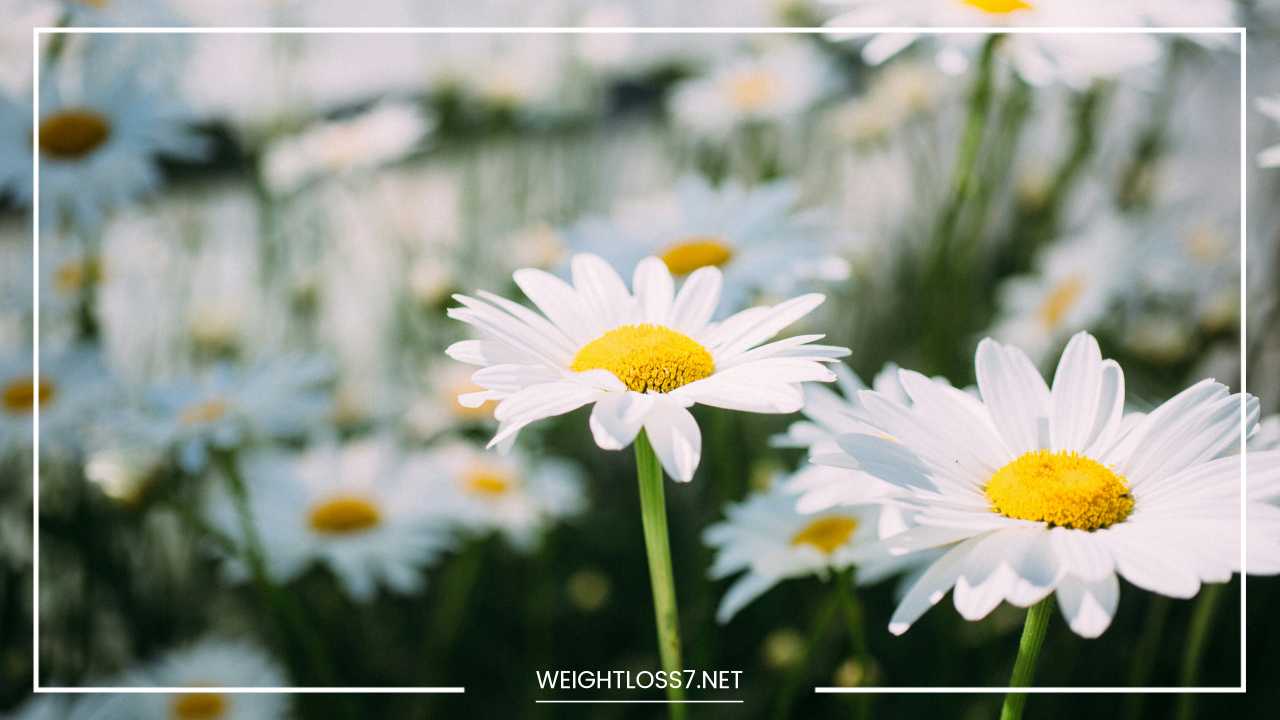Chamomile Uses and Health Benefits

Chamomile
Chamomile: A Time-Honored Herbal Elixir
Chamomile, with its illustrious history spanning millennia, emerges as a time-honored herbal remedy treasured for its multifaceted healing properties.
This delicate flowering plant, known for its daisy-like blossoms, has been an integral part of traditional medicine across cultures.
This comprehensive exploration aims to delve deeper into the various dimensions of Chamomile, from its historical roots to contemporary applications, shedding light on its diverse uses and highlighting its enduring relevance in today’s health and wellness landscape.
Historical Roots and Traditional Uses:
Chamomile’s medicinal legacy can be traced back thousands of years, where it was revered for addressing a myriad of health concerns.
Used by ancient civilizations, including the Greeks, Romans, and Egyptians, this herb was a staple in their pharmacopoeias.
The flowering tops of the Chamomile plant, characterized by their aromatic and therapeutic qualities, were meticulously harvested and utilized for creating teas and herbal formulations.
Digestive Elixir and Infant Care:
One of the most notable historical applications of Chamomile was its efficacy in addressing digestive issues, particularly in infants.
Long before the era of over-the-counter gas relief drops, Chamomile-infused solutions were the remedy of choice for mothers seeking to soothe their colicky babies.
The flowering tops, when stewed and strained, produced a liquid with a deep yellow hue, often lightly sweetened for palatability.
Although lacking scientific validation, this concoction exhibited an uncanny ability to calm fussy infants, lulling them into restful slumber.
Women’s Health and Well-Being:
Chamomile wasn’t confined to infant care; it played a crucial role in women’s health, especially in times when specialized medications were not readily available.
Prior to the advent of dedicated menstrual pain relievers like Midol and Pamprin, Chamomile was a trusted ally for women grappling with menstrual cramps.
Its soothing properties extended beyond physical discomfort, offering relief from anxiety and stress. Sipping on Chamomile tea became a ritual for those seeking respite from tension, a tradition that endures in some circles to this day.
Topical Marvel:
Chamomile’s therapeutic reach extended to topical applications, showcasing its versatility. The plant produces an essential oil, which, when isolated, takes on a distinctive bluish color.
This oil is endowed with potent anti-inflammatory properties, making it a formidable ally in addressing skin conditions such as infections, eczema, and inflammation.
Mothers, in particular, harnessed the topical benefits by incorporating Chamomile into remedies for bug bites, diaper rashes, and eczema.
In a practice reminiscent of bygone eras, mothers would fashion stockings filled with Chamomile and oatmeal, creating a soothing bath solution for their children, effectively alleviating itching and improving diaper rash conditions.
Herbal Wisdom Passed Through Generations:
Chamomile’s prominence in historical remedies underscores its vital role in the absence of modern pharmaceutical solutions.
Herbal wisdom, often passed down through generations, positioned Chamomile as a cornerstone in the repertoire of home remedies.
Families relied on these time-tested formulations long before the advent of contemporary medications, highlighting the enduring efficacy of Chamomile in addressing various health concerns.
Synergistic Herbal Blends:
The versatility of Chamomile found expression in synergistic blends with other herbs. For instance, to combat nausea, a combination of Chamomile, shredded licorice root, fennel seeds, and peppermint proved to be a potent remedy.
This exemplifies how Chamomile seamlessly integrated into herbal combinations, amplifying its therapeutic potential and expanding its applications across a spectrum of health issues.
Ragweed Allergy Precautions:
While hailed for its numerous benefits, Chamomile came with a caveat. Individuals with allergies to Ragweed, a botanical relative of Chamomile, were cautioned against ingesting it.
This precautionary measure aimed to prevent potential allergic reactions and ensure the safety of those incorporating Chamomile into their health regimens.
Pleasurable Enjoyment Beyond Ailments:
Chamomile transcended its medicinal applications, finding a place in the hearts of those who simply enjoyed a soothing cup of Chamomile tea.
Its mild, distinct flavor became a source of pleasure, prompting individuals to indulge in this herbal elixir for its taste alone. The pleasure derived from sipping Chamomile tea expanded its allure beyond therapeutic necessity.
Safe Haven for Mothers:
In a surprising turn, Chamomile emerged as an exception to the general cautionary advice for pregnant and nursing mothers regarding herbal consumption.
While conventional wisdom often urged expectant and lactating mothers to avoid herbal remedies, Chamomile stood out as a safe option.
Its gentle nature made it suitable for consumption during these delicate phases, providing a reassuring option for mothers navigating the complexities of pregnancy and lactation.
Remarkably, Chamomile even found application in soothing teething babies, further solidifying its place as a trusted companion in the realm of maternal care.
Cosmetic Applications:
Beyond its role in health and well-being, Chamomile ventured into the realm of beauty and cosmetic applications. Its properties as an excellent hair conditioner and scalp soother were recognized and embraced.
When mixed with a touch of lemon and exposed to sunlight, Chamomile was believed to impart subtle, natural highlights to hair.
This cosmetic dimension added yet another layer to the herb’s multifaceted nature, showcasing its adaptability beyond the realm of traditional medicine.
Final Remarks:
In conclusion, Chamomile stands as a resilient emblem of herbal wisdom, transcending time to offer a holistic approach to health and well-being. From its ancient origins to its continued relevance today,
Chamomile’s diverse applications underscore its status as a botanical marvel. Whether sipped as a comforting tea, incorporated into topical remedies, or blended with other herbs for synergistic effects, Chamomile remains a cherished herbal ally.
Its enduring popularity and continued use in various facets of life attest to the timeless appeal of this unassuming yet powerful herb in the pursuit of optimal health.

















